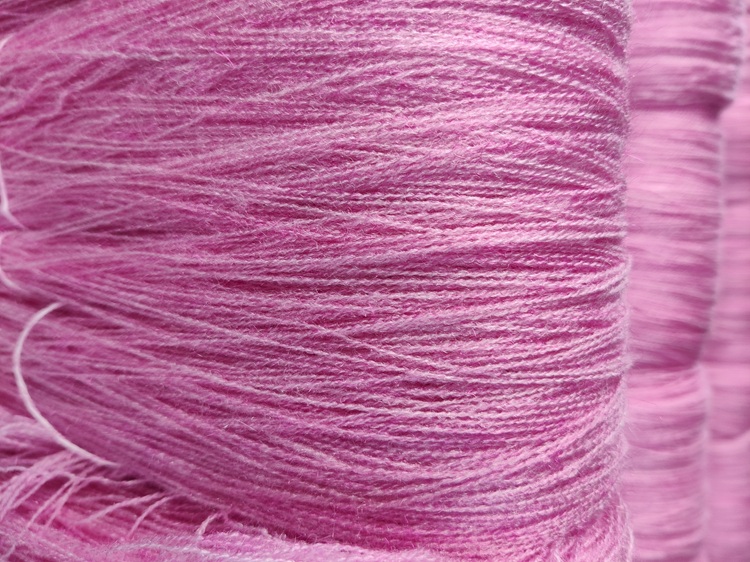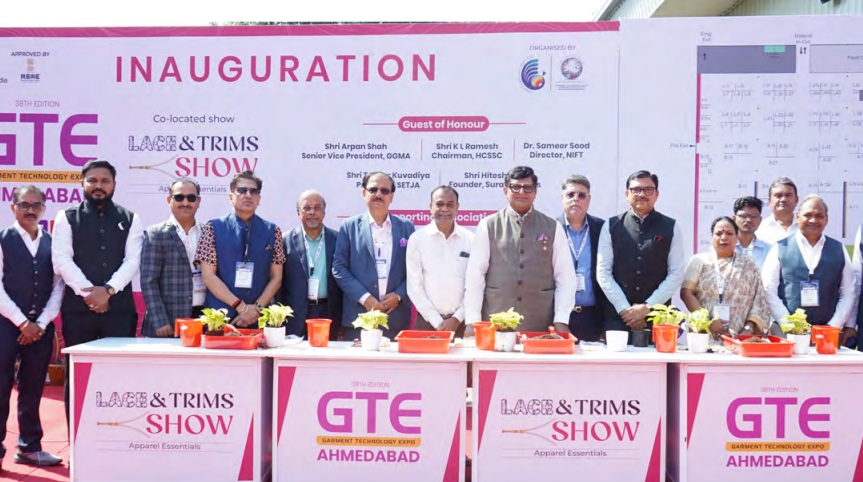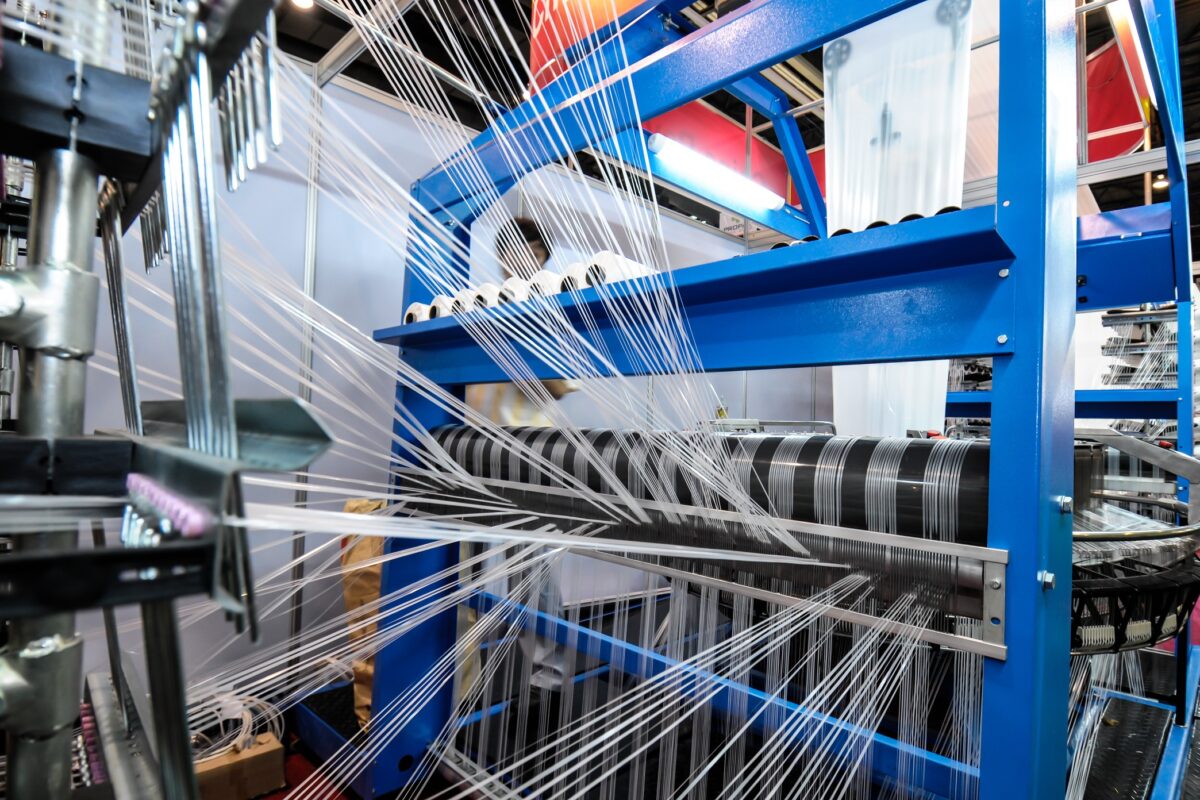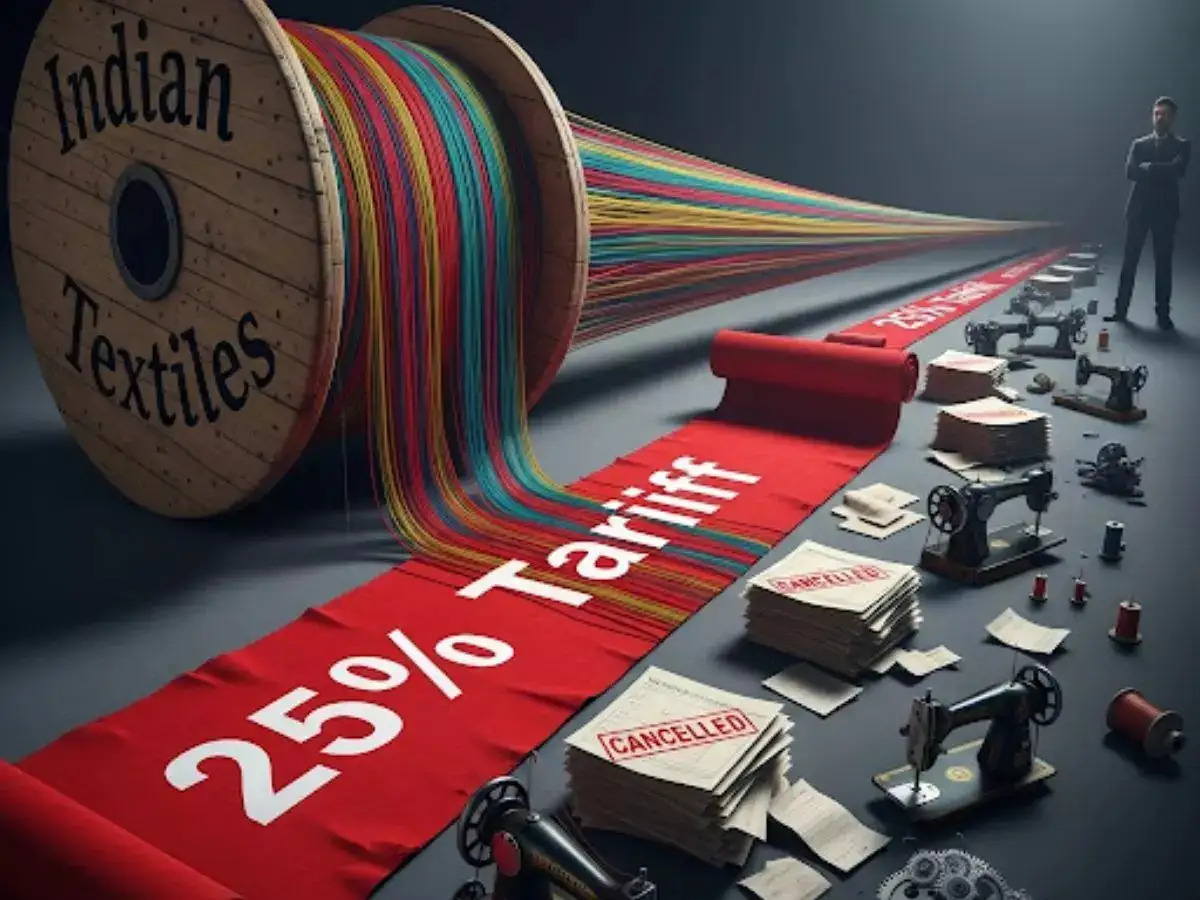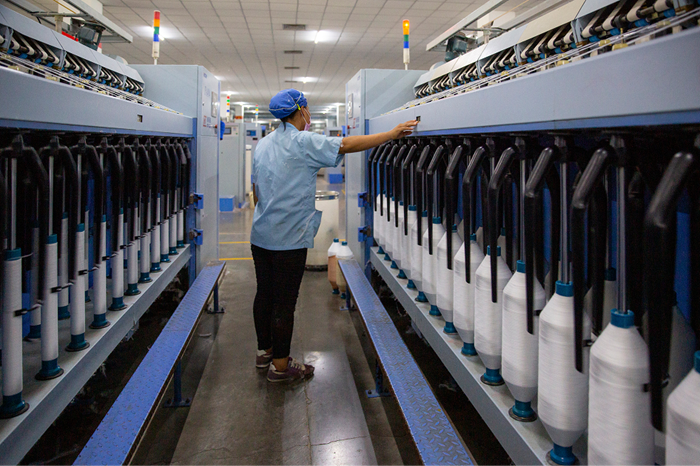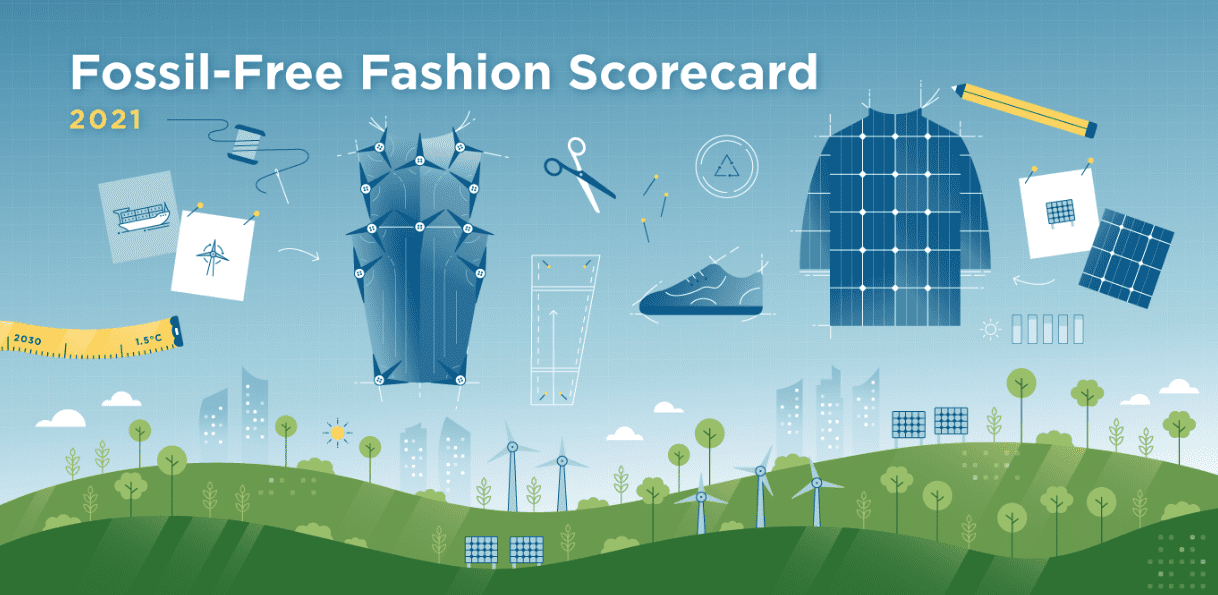FW
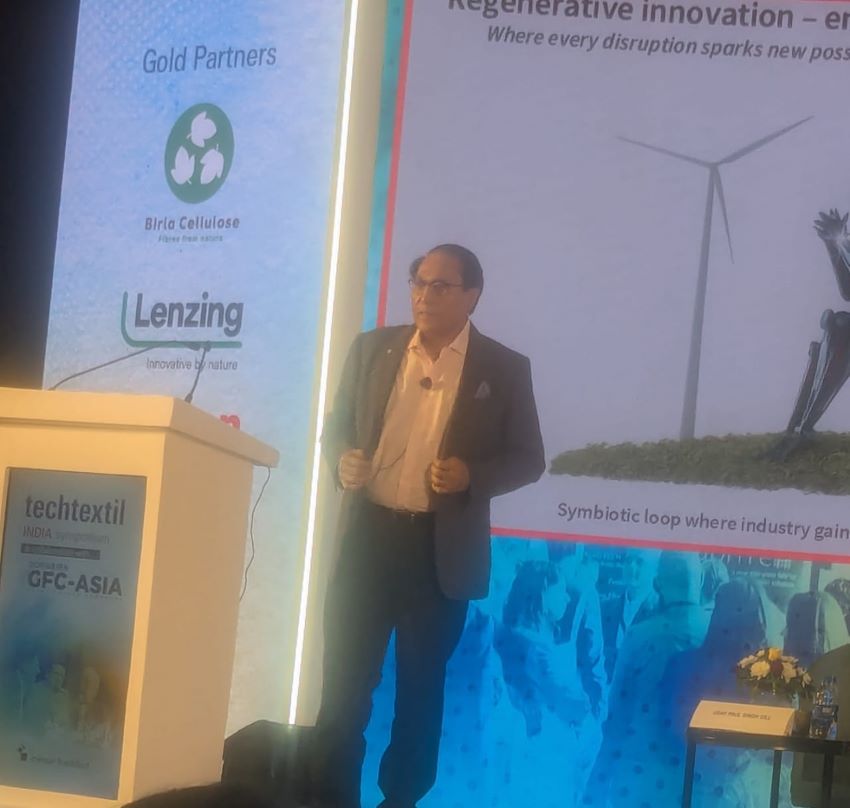
The global textile industry is at a crossroads where mere efficiency and profit no longer guarantee survival. This was the central message delivered by Uday Paul Singh Gill, Senior Partner at Gherzi Consulting, Zurich, during his keynote address at the Dornbirn Global Fibre Congress (GFC). He argued that long-term success requires a fundamental shift in mindset, prioritizing regenerative innovation that balances profit with purpose.
The Innovation Paradox: Unintended consequences
Gill challenged the traditional view of innovation, pointing out that some of the greatest scientific achievements have led to profound environmental damage. "I have worked in polyester all my life. But yet, polyester is said to be the miracle of science. And we didn’t know that the solution to the fibre industry by polyester can end up in creating microplastics."
He used the invention of the combustion engine and the widespread use of polyester, which fragments into microplastics, as classic examples of how innovation, when unchecked by purpose, leads to "highly unpredictable, unintended consequences." He concluded that the new mandate is to put "purpose and discipline on innovation" to ensure it benefits humanity and the planet.
The call for ‘Regenerative’ innovation
The key to long-term survival, according to Gill, is regenerative innovation—a system that moves beyond just being "less bad" to being actively good for the environment and the community.
This concept demands the creation of symbiotic groups where:
● Industry prospers.
● Nature benefits.
● The community is prosperous.
Gill stressed that simply scaling up ideas or achieving cost efficiencies is no longer enough. Instead, innovation must create lasting value, not just profit, by leveraging the convergence of three major domains: physical, digital, and biological.
Surviving the shortening corporate lifespan
The speaker warned that as the pace of disruption accelerates, the average lifespan of corporations is shrinking. Companies that fail to continuously renew themselves will become obsolete, much like Blackberry or the Indian TV company Onida, which failed to adapt to digital technology.
Gill linked this instability directly to inefficient resource deployment and overcapacity, stating that innovation is required when "scale out grows demand." The solution lies in creating a strategic architecture for resilience and "first time right execution."
The brain economy and human centricity
Perhaps the most thought-provoking argument centered on the "Brain Economy," which focuses on capturing and leveraging human cognitive surplus. Gill criticized modern workplaces for pushing humans to work like machines while simultaneously trying to make machines think like humans."We are pushing the humans beyond their limits and stretching them to work like machines. Whereas at the same time we are trying to make the machines think and work like humans. So this is why I think we are going wrong on both sides."
For regenerative innovation to succeed, the human element—creativity, well-being, and mental state,must be superior and agile, working on top of the machines, not beneath them.
Finding the "Sweet Spot" for sustainable profit
Gill’s strategic recommendation for manufacturers looking for long-term survival was to integrate their value chain to find the "sweet spot" between scale and value.
● Commodity Model: High scale, low profitability, high volatility.
● Speciality Model: High overheads, inconsistent profitability.
● The Sweet Spot: Integrating the chain to combine the best aspects of scale and specialty, resulting in improved earnings quality and long-term viability.
He concluded with an urgent call to action, emphasizing that the time for incremental change is over. Successful innovators are those who execute their ideas sustainably and fast, making it clear that, going forward, the industry must prioritize the planet first, the people first, and then the profit.

The global textile industry is entering a period of exponential growth and profound technological transformation, according to key figures speaking at the Dornbirn Global Fibre Congress (GFC) in Mumbai. While demand for fiber is set to soar, the industry's fossil-fuel foundation is shifting, placing pressure on machinery manufacturers and innovators to rapidly pivot toward circular and bio-based systems.
Insights from Georg Stausberg, CEO of Oerlikon Polymer Processing Solutions, and Professor Thomas Gries, Director of the Institute of Textile Technology at RWTH Aachen University, painted a picture of opportunity, provided the necessary technological investments are made now, particularly in India.
The Growth Mandate: 168 mn tons of demand
Despite economic volatility and geopolitical pressures, the long-term outlook for fiber demand remains overwhelmingly positive.
Stausberg highlighted that population growth and increasing global wealth are driving continuous expansion. "We expect that in 50 years from now, there will be 1 billion more people on our planet," Stausberg noted. This demographic surge is projected to push the total demand for fiber—man-made and natural—from the current level of approximately 118 million tonnes to a massive 168 million tonnes in the coming decades.
To meet this scale, the manufacturing base is consolidating in Asia, with India poised to capitalize significantly on the growth, particularly in specialized areas.
The Technical Textile boom in India
The demand surge is not just for apparel; it is heavily focused on specialized, high-performance fibers—known as technical textiles. These products are critical for modernizing infrastructure and manufacturing sectors, areas where India is experiencing rapid growth.
Speakers forecast the technical textiles segment in India to nearly triple by 2040. The key growth sectors include:
● Geotextiles: Used for road and railway construction.
● Building & Construction: Demand for concrete reinforcement and insulation materials.
● Automotive: High-performance yarns for seatbelts, airbags, and tyre cord, essential for the growing domestic and export car industry.
The polyester paradox and the shift to bio-economy
The dominant fiber, polyester, currently accounts for 85% of global man-made fiber production. However, this dominance presents the core challenge for sustainability efforts.
Professor Thomas Gries emphasized that the current reliance on petrochemicals is unsustainable, necessitating a shift into a "non-fossil base" future, or the Bi-economy Transition. He outlined three critical strategies for this pivot:
- Bio-based materials: Utilizing biomass, natural fibers, and bio-based building blocks.
- CO2-to-Polymer: Developing technology that captures carbon dioxide and makes polymers directly out of it.
- Recycling: Aggressively scaling up systems for textile waste.
Professor Gries reminded the delegates that sustainability must encompass more than just a carbon footprint—it requires coping with society, education, and well-being—a holistic approach to transition the entire ecosystem.
Chemical recycling: The missing link
While mechanical recycling is the current industry standard, it is limited in its ability to process complex materials like blended, colored, and contaminated fibers, which constitute the majority of post-consumer textile waste.
Stausberg underscored the urgency for a breakthrough in chemical recycling. Oerlikon, a world leader in equipment manufacturing, is actively working with partners on intensive research to bridge this gap. "Recycling at the moment, state-of-the-art is mechanical recycling, where we already have solutions available," Stausberg explained. "Chemical recycling is also very important... and hopefully we can offer solutions here in the next 2–3 years, also for textile-to-textile recycling."
The machinery suppliers, represented by Oerlikon Barmag, recognize their critical role in the circular economy by providing end-to-end solutions, often referred to as "from melt to yarn." These solutions are necessary to process feedstocks ranging from traditional fossil-based polymers to new bio-based materials and the monomers recovered from chemically recycled textiles.
The consensus from the conference floor was clear: the technology exists to handle future demand, but achieving true, industrial-scale circularity—the kind that can transform textile waste back into high-quality fiber—requires massive, coordinated investment in chemical processing technology to move past the limitations of mechanical sorting and shredding.

The journey for India’s activewear industry to move "Beyond CMT" (Cut, Make, Trim) and capture the global premium mandate is not constrained by market demand or labor, but by structural bottlenecks in the supply chain, investment philosophy, and training. Panel discussions at the Techtextil India SportTech Pavilion underscored that overcoming these challenges requires a fundamental shift in strategy: from isolated operation to radical collaboration.
The Bottleneck: A disjointed ecosystem
Industry leaders repeatedly pointed to the lack of a fully integrated domestic ecosystem as the primary roadblock to achieving global scale and competitiveness, especially when facing giants like China and Vietnam.
● Reliance on imports: The central weakness lies in the backward supply chain for high-quality synthetics. The problem of sourcing good polyester is considered "solved," but the industry still relies on imports for specialized raw materials, such most importantly, high-quality nylon yarn and specific components for technical garments.
● Missing infrastructure: This dependence on imports creates unacceptable delays. Bhaskar Dutta, Sourcing Head, Page Industries/Jockey India shared a practical example: a designer requested a specific yarn color, and the manufacturer had to wait two months to procure the yarn from China, resulting in a lost season. Dutta argued that similar yarn could be sourced in China within seven days, demonstrating the competitive infrastructure gap India must bridge.
The Strategic Fix: Integration and consortiums
The consensus solution is to rapidly build strong domestic verticality and implement highly collaborative models to ensure speed and consistency.
● Vertical integration as default: Major garment exporters are becoming vertically integrated, controlling the process from yarn to finished product. This approach allows companies like Gokuldas Exports, which recently invested $105 million this year and is targeting $1 billion in revenue by 2030, to reduce complexity and lower the overall cost of production.
● The power of consortiums: For smaller players and specialized needs, the solution is deep collaboration across the value chain. A consortium of yarn makers, fabric processors, trim suppliers, and garment makers working together was cited as a success model. This collaboration is crucial for sampling and small orders—key activities required to win and retain international buyers who test products before placing massive orders.
The Investment Hurdle: Shifting the mindset on ROI
Beyond the physical supply chain, a major cultural and financial bottleneck was identified: the industry’s philosophy on investment and R&D.
● The quick ROI problem: Many Indian manufacturers operate with a mindset of wanting a quick Return on Investment (ROI) on new technology. As Abhay Dev noted, this desire immediately drives up the price of new, innovative products, which ultimately prevents them from achieving the commercial scale needed to lower costs, thus perpetuating the cycle of non-competitiveness.
● The Sustained investment mandate: Anandan (Gokul Exports) countered that technology is needed for "sustainment," not just quick return. He noted that their internal efficiency rose from 31% to 48% through organizational investment, proving that internal optimization—not external price increases—should fund innovation.
● R&D as an "Innovation Facility": Leaders called for manufacturers to treat the "manufacturing facility as an innovation facility" and invest in R&D without the immediate expectation of financial return. Shaleen Toshniwal, Chairman, MATEXIL advocated for pursuing "fundamental research," urging the industry to avoid merely copying global technology ("making a better steam engine") and instead focus on breakthroughs ("the internal combustion engine") that fundamentally change the game.
Cost efficiency and training in new clusters
To compete effectively on cost with other Asian nations, the industry is strategically migrating production, which creates an urgent need for upskilling.
● Regional migration for cost advantage: To address rising costs in traditional textile hubs, large players are shifting manufacturing to lower-cost locations like Bhopal, Ranchi, and Orissa. This move is aimed at balancing the price-conscious nature of the market while maintaining quality standards.
● Strengthening the middle layer: This geographical shift creates a simultaneous training challenge. While the general workforce can be trained quickly, there is a critical shortage of middle management, the strategic decision-takers. The solution requires collaboration with local governments to establish technical training institutes in these new clusters to rapidly enhance the skill levels of the core team responsible for quality and efficiency.
The panels concluded that for India to achieve its target of doubling exports to $10 billion by 2030, the textile fraternity must replace its historical reliance on isolated manufacturing with a nationwide policy of technical collaboration and long-term strategic investment.
The panel discussions at the SportTech Pavilion during Techtextil India (November 19-21, 2025, in Mumbai). The sessions were titled "The Premium Mandate" and "Beyond CMT" and were moderated by Concepts N Strategies.

The SportTech Pavilion at Techtextil India, hosted by Concepts N Strategies, concluded with a unanimous declaration: for India to successfully execute its "Premium Mandate" and move "Beyond CMT," technical textile innovation and radical sustainability are non-negotiable. The future of Indian activewear relies on turning the factory floor into a science lab that prioritizes green operations and next-generation materials.
Sustainability as a "Given Thing"
For the new generation of brands, the idea of offering sustainable products is no longer a unique selling proposition; it is the entry ticket to the premium market.
● Mindset Shift: Praveen Dhake, founder of the high-performance brand Athlos Activewear, emphasized this critical shift in perception: "Sustainability, I think, at least going ahead for most of the brands, should be a very big component. It should be not just a market." He stressed that his brand doesn't sell a running short because "it’s sustainable," but because it's a "damn good running short" that happens to align with eco-conscious principles.
● Ethical Storyline: The demand for performance must be matched by a transparent, ethical "storyline" that explains how genuinely the product is made, satisfying a global consumer base increasingly aware of the environmental footprint of apparel.
Clean Manufacturing: The green infrastructure mandate
To meet global compliance standards and secure buyer trust, Indian mills are heavily investing in state-of-the-art green infrastructure, moving away from polluting legacy processes.
● Zero impact facilities: Puneet Singla, General Manager Kusumgar Limited detailed his company's commitment, noting that "compliance is also one thing that we live with." This is demonstrated through tangible, massive investments: running a "zero-coil boiler," maintaining a "zero liquid discharge facility," and generating up to "65 to 70 percent of electricity coming from the solar rooftop" panels.
● Eliminating water use: The industry is even tackling one of the most water-intensive processes in textiles. Panelists noted the introduction of technologies like "waterless dyeing," which not only conserves resources but also allows for smaller production runs (e.g., dyeing to the level of 15-20 pieces of fabric), essential for the faster cycles required by international buyers.
The Material Science Frontier: From recycled to bio-tech
The most intense focus is on the raw materials themselves, pushing manufacturers to master synthetic and natural performance fibers.
● Innovation in eco-materials: Brands are expanding beyond conventional cotton, leveraging advanced fibers for high-performance gear. Athlos Activewear exclusively works with fibers like merino wool, recycled nylon, recycled polyester, bamboo, and Tencel. There is also future exploration into bio-tech to pursue non-recycling-focused sustainability.
● Technical fabric breakthroughs: Indian mills are demonstrating advanced capability, achieving production that rivals international leaders. Puneet Singla highlighted the successful manufacturing of fabrics "as fine as 15 denier," resulting in weights as low as 35 gsm—a level of finesse previously difficult to source domestically.
● The Nylon challenge: Despite progress, a critical supply chain gap remains: high-quality nylon yarn. The industry confirmed that the problem of sourcing good polyester is "solved," but brands still need to look overseas for premium nylon. This need has triggered a new mandate for local manufacturers to collaborate and invest in MMF (Man-Made Fiber) processing and spinning plants to close this gap and ensure reliable, consistent domestic sourcing.
The convergence of radical technical innovation and rigorous environmental compliance is rapidly becoming the defining characteristic of India’s competitive edge, ensuring that the country is ready to deliver not just products, but solutions built on a clean and capable foundation.
These panel discussions were held at the SportTech Pavilion during Techtextil India (November 19-21, 2025, in Mumbai). The sessions were titled "The Premium Mandate" and "Beyond CMT" and were moderated by Concepts N Strategies.

Europe’s fashion and textile scenario is on the verge of its most consequential structural shift in over a decade. The European Union’s plan to abolish the €150 de minimis customs exemption for non-EU e-commerce imports, now fast-tracked for implementation by early 2026 is ready to reset competitive dynamics across the region. For years, this loophole allowed billions of small parcels to enter the bloc duty-free, enabling platforms like Shein and Temu to weaponize ultra-low pricing and scale to capture massive market share.
That asymmetric advantage is now being systematically dismantled. Once the exemption disappears, every cross-border parcel entering the EU will attract customs duties, VAT, and potentially additional handling charges. The impact will be immediate and deeply disruptive, particularly for Chinese fast-fashion exporters whose model depends on high-volume, low-value shipments.
Meanwhile European retail giants such as Inditex (Zara) and H&M, historically disadvantaged by this uneven tax regime are emerging as the biggest beneficiaries. With compliance discipline, proximity production, and established import infrastructure already embedded in their cost structures, the reform acts as a strategic tailwind precisely at a time when they face intense competition from Asian e-commerce titans.
The scale of the loophole
The volume of duty-free parcels entering the EU has rose to levels that few policymakers anticipated. More than 4.6 billion small parcels entered the bloc under the de minimis threshold last year, and over 90 per cent originated from China. These shipments bypassed standard import duty of roughly 12 per cent on apparel, allowing overseas platforms to undercut European price tags by margins traditional retailers could never match. To contextualize the scale of the distortion, the following table shows how the duty-exempt ecosystem ballooned relative to the EU’s apparel import market.
Table: Duty-free e-com parcels vs. overall EU apparel imports (2024)
|
Metric |
Estimate |
|
Total low-value parcels imported into EU |
4.6 billion parcels |
|
Share originating from China |
90%+ |
|
Estimated value of de minimis imports |
€35-40 billion |
|
Standard apparel duty for EU retailers |
12% |
|
Parcels entering with zero duty |
Nearly 100% of de minimis consignments |
The abolition of the exemption not only reintroduces duties but also introduces a proposed €2-per-parcel handling charge an added burden that hits low-ticket, high-volume models the hardest. For an item retailing at €8-10, even minor additional costs can collapse its price competitiveness.
Compliance becomes a competitive filter
Beyond the duty dimension, the EU is simultaneously rolling out its stricter Import Control System 2 (ICS2), requiring all incoming packages to be backed by comprehensive pre-arrival data. This includes accurate six-digit HS codes, detailed product descriptions, and complete declarations standards that many cross-border sellers have historically failed to meet.
Where European retailers already comply with REACH chemical norms, stringent product-safety frameworks, and routine customs processes, low-cost e-commerce exporters face a major structural adjustment. Delays, detentions, and administrative penalties under ICS2 could severely disrupt the speed-dependent, volume-driven model of platforms such as Shein and Temu. To illustrate the operational gap between regulated European import systems and fragmented Chinese parcel-shipping networks, consider the following:
Table: Compliance complexity EU retailers vs cross-border e-commerce platforms
|
Parameter |
Inditex/H&M model (traditional retail) |
Shein/Temu cross-border model (D2C) |
|
Duty & VAT Exposure |
Fully compliant for all bulk imports (pays duty & VAT) |
Minimal to zero under de minimis rule—now ending |
|
Product Safety & REACH Compliance |
Integrated, certified supply base |
Historically inconsistent; audits limited |
|
ICS2 Data Requirements |
Existing infrastructure and integrated ERP systems |
High risk of misdeclaration or incomplete data |
|
Supply Chain Structure |
Near-shoring, consolidated shipments |
Millions of micro-parcels via air courier |
|
Vulnerability to Customs Delays |
Low (due to compliant bulk shipments) |
High under new rules (due to high volume of small parcels) |
The friction introduced by ICS2 is likely to be as impactful as the new customs charges themselves. A packet with incomplete HS codes may face multi-day holds, eroding the instant-gratification proposition that fuels fast-fashion e-commerce.
Why Europe’s traditional retailers stand to gain
The regulatory reset effectively rewrites the competitive calculus in Europe’s online apparel market, where Chinese platforms are estimated to have seized over 20 per cent of digital fashion sales in recent years. With the price gap narrowing and compliance burdens rising, Zara and H&M find themselves positioned to recover lost ground.
One of the most decisive advantages lies in operational agility. Inditex’s signature proximity sourcing model with nearly half its production located in Spain, Portugal, Morocco, and Turkey means shorter lead times, faster replenishment, and lower inventory risk. When cross-border shipments slow or become cost-prohibitive, agility becomes market share.
The rising cost of importing low-value shipments also reshapes consumer behaviour. For millions of price-sensitive customers who flocked to Shein or Temu for €5 tops or €10 dresses, the narrowing price gap may make it more rational to purchase domestically or from established European brands. Even a 10-15 per cent increase in final retail prices for Chinese imports could significantly temper demand.
This dynamic increases revenue potential for European brands, especially in the mid-value fast-fashion segment. With Chinese imports becoming less disruptive, European players can regain footing in categories where they previously struggled to compete purely on price.
Rebalance, not a temporary correction
The EU’s overhaul is more than a regulatory response; it marks the beginning of a long-term redrawing of Europe’s retail competitive boundaries. European retailers have endured years of systemic disadvantage fully taxed, highly regulated, sustainability-compliant while competitor models routed around these obligations through fragmented cross-border parcel flows.
The elimination of the €150 exemption dissolves the foundational economic pillar supporting ultra-cheap fashion imports. Combined with the heavier compliance architecture of ICS2, the new regime takes aim not at volume but at the systems and incentives that enabled vast underpriced inflows.
For European incumbents, the shift gives an opportunity to reclaim pricing power and re-energize online growth. For global fast-fashion disruptors, it introduces cost, scrutiny, and uncertainty into a model that depended on frictionless access. As the EU advances toward a post-de minimis future, the balance of power in the region’s fashion market is tilting decisively. Inditex and H&M companies already structured to absorb regulatory, compliance, and duty costs stand to benefit significantly from the new environment. The customs overhaul is expected to lift operating margins, reduce competitive pressure from Chinese exporters, and catalyse a meaningful shift in consumer buying behaviour back toward established retail brands.
The outcome is clear: Europe is engineering a more level playing field, but in doing so, it is also fortifying the competitive position of its homegrown fashion giants. For fast-fashion e-commerce platforms built on micro-parcel economics, the era of effortless expansion in Europe is coming to an abrupt end.
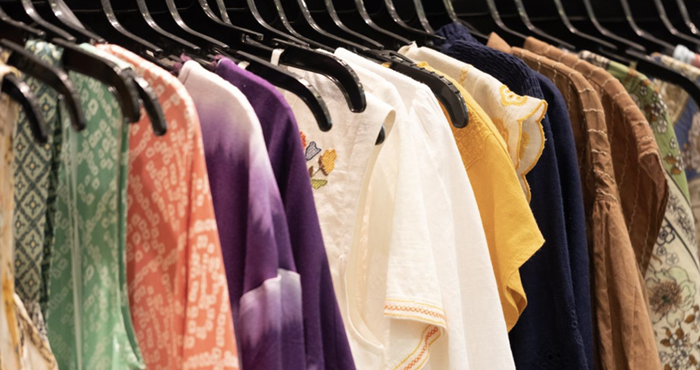
As the global apparel economy enters the final quarter of 2025, trade flows across major markets reveal a sector facing contradictory currents, some markets still soft from inflation-linked demand fatigue, while others rise on renewed consumer confidence and resilient supply chains. Wazir Advisors’ ‘Global apparel trade & retail update report’ for November 2025 gives an overview of latest apparel consumption and trade data for major supplier and buyer nations.
The study on September and October data across imports, exports and retail performance suggest a slow but unmistakable reconfiguration of global sourcing preferences, with Asia’s manufacturing hubs facing uneven momentum and Western markets exhibiting divergent signs of recovery.
Together, these indicators paint a portrait of a global industry at an inflection point, one where brands are recalibrating sourcing footprints, consumers are rediscovering discretionary categories, and traditional export leaders are being challenged by shifting cost and compliance dynamics.
Western import markets split
In September 2025, apparel imports into the world’s largest consumer markets shows mixed results. The US, typically the bellwether of global fashion demand, reported imports of $7.3 billion, a 6 per cent year-on-year decline. This drop, continuing through most of 2025 reflects a consumer base still restrained by sticky inflation and a shift toward value-driven purchases. Retailers have also been cautious in replenishing inventories, opting for leaner stock positions going into the holiday season.
In stark contrast, Europe’s demand revival grew. The EU’s apparel imports hit $10.1 billion, a 13 per cent increase over the previous year, indicating a clear rebound in consumer sentiment. The region has benefited from moderating inflation, an uptick in tourism spending, and a strong appetite for fast-fashion and value fashion segments.
The UK, despite economic pressures earlier in the year, posted one of the strongest rebounds globally. With imports rising 19 per cent YoY to $2.3 billion, the UK is witnessing a reawakening of apparel consumption, driven partly by improved wage growth and a return of in-store shopping.
Asian consumer markets also showed resilience. Japan’s imports grew 14 per cent YoY to $2.5 billion, powered by demand for premium casualwear and the continued shift toward lifestyle-oriented apparel.
Collectively, the data highlights that demand in Western Europe is now outpacing the US, reshaping sourcing priorities for global manufacturers.
Asia’s heavyweights slow in exports, Europe’s niche players grow
On the export side, 2025 has turned into a year of unpredictable momentum. Exporters traditionally viewed as global giants viz. China, Bangladesh, and India faced declines, while several smaller or emerging markets recorded outsized growth.
China’s sharp slowdown marks a structural shift. Still the world’s largest apparel exporter, reported $10.6 billion in October exports, down 16 per cent YoY. The drop is due largely to rising labor costs, compliance pressures, nearshoring by Western brands, and the gradual relocation of basic manufacturing to Southeast Asia.
Bangladesh and India declines reflect a tough global pricing cycle. Bangladesh’s October exports came in at $3.0 billion, down 9 per cent YoY, underscoring ongoing price pressures from global buyers who are shifting orders to lower-cost alternatives such as Myanmar or Cambodia. India fared similarly, with exports down 13 per cent YoY to $1.1 billion in October. Indian exporters have faced headwinds due to a combination of weak US demand, fluctuating raw material prices, and intensifying competition from Vietnam and Türkiye.
Meanwhile Vietnam continues to consolidate its position as a stable sourcing destination, posting $3.9 billion in exports in July, a modest but steady 3 per cent YoY increase. Its competitiveness in synthetics and athleisure categories remains an advantage. Sri Lanka, despite its macroeconomic struggles, recorded $0.40 billion in September exports, up 3 per cent YoY, supported by niche segments such as intimatewear and performance apparel.
Turkey’s decline vs Europe’s rising stars
Türkiye, once the fastest-growing nearshoring hub for Europe, saw exports fall 9 per cent YoY in August to $1.5 billion, a reflection of persistent currency volatility and softening EU demand for mid-market categories. Conversely, Poland and Italy emerged as the standout performers among European manufacturers.
• Poland’s July exports rose 27 per cent YoY to $1.4 billion, driven by its integrated fast-fashion production capabilities for EU brands.
• Italy recorded $3.1 billion in July exports, up 12 per cent, confirming its leadership in luxury, leatherwear, and premium fashion.
• Spain posted a steady 3 per cent YoY increase in August to $1.3 billion, showcasing resilience in mid-premium and fast-fashion segments. Pakistan’s quiet rise
Pakistan’s apparel exports touched $0.82 billion in June, growing 9 per cent YoY, supported by strong demand for knitwear and home textiles, and benefiting from competitive pricing relative to regional peers.
India and the UK show a return to fashion spending
Retail performance in major consumer markets indicates a tentative return of discretionary spending. In India, apparel retail sales in August 2025 grew 7 per cent over the previous year. This increase reflects a revival in festive-season shopping, stronger mall footfall, and steady traction for value fashion now the fastest-growing segment in the country’s retail ecosystem.
The UK also showed signs of recovery, with apparel store sales rising 5 per cent YoY in October 2025. This gain comes after months of suppressed demand and highlights consumers’ gradual return to full-price purchases. These retail growth align with rising import demand seen in both markets, reinforcing a positive near-term outlook for brands operating in these geographies.
Indications of a rebalancing world
The second-half data from Wazir Advisors’ report 2025 suggests that global apparel trade is showing subtle but steady rebalancing.
• Europe is becoming the growth engine of global apparel demand, outpacing the US for the first time in years.
• China’s export slowdown marks a structural shift, not a cyclical one accelerating diversification of sourcing.
• South Asia’s exporters face pressure, especially India and Bangladesh, as buyers push for lower costs and quicker lead times.
• Emerging hubs (Poland, Pakistan, Sri Lanka) are gaining relevance with specialized or cost-competitive offerings.
• Retail demand recovery in markets like India and the UK indicates a stabilizing consumer environment heading into 2026. As brands plan their sourcing strategies for the coming year, the message is clear: the era of predictable trade flows is over. The apparel industry is entering a new cycle defined by agile sourcing, regional manufacturing ecosystems, and a more volatile but opportunity-rich global market.
The French fashion industry faces a challenging 2026, anticipating flat sales amidst persistent global uncertainty. This stagnation mirrors a wider European manufacturing crisis, where unchecked foreign competition—including a significant 12.3% surge in clothing imports during the first half of 2025, has battered domestic manufacturers. However, French authorities are leveraging stringent new environmental policy as a structural defense mechanism to foster a competitive, high-value ecosystem, which currently employs 1.3 million workers across the EU.
Investment in traceability and circularity
Effective October 2025, France's pioneering Écobalyse regulation (Environmental Cost labeling) requires brands to disclose a product’s full life-cycle impact, from raw materials to end-of-life. This transparency tool, the first of its kind, is designed to reward domestic sustainability investments. This aligns with the EU’s commitment to invest up to €60 million through the European Partnership for Textiles of the Future (2025–2030) to boost R&I.
This focus on mandatory traceability and circularity is seen as essential leverage. As one industry leader stated, "Mandatory disclosure, backed by financial support, is the only way to transform our €170 billion ecosystem into a resilient, high-value industry, countering the low-cost import threat that operates outside these environmental requirements." France is further reinforcing this approach by increasing its national textile recycling aid to €57 million in 2026, positioning itself at the forefront of the upcoming EU Circular Economy Act.
Zara's launch of a sprawling 7,200 sq. meter flagship on Barcelona's Paseo de Gracia underscores a powerful shift among global apparel giants. For Inditex, Zara's parent, the strategy is not merely expansion but consolidation through 'phygital' monoliths. Unlike emerging Direct-to-Consumer (D2C) brands that rely on external capital to secure their first international physical entry points, Inditex is fortifying its core mature markets. This new store, replacing multiple smaller outlets, demonstrates the company’s commitment to an integrated model, which is essential to maintain its luxury-lite market position.
Digital integration and financial scale
This focus on immense, high-tech formats drives significant economic scale. Inditex reported robust financial health with 11% sales growth in the first half of the year, proving the viability of this omnichannel approach. As CEO Óscar García Maceiras noted, "Our integrated store-and-online model allows us to leverage physical infrastructure for logistics efficiency." The Barcelona store serves as a key case study: it acts as a primary distribution hub and marketing statement, featuring automated click-and-collect points and seamless app integration. This physical footprint reduces last-mile delivery costs—a direct counterpoint to the spiraling customer acquisition costs plaguing pure-play online entrants globally.
The net-zero industrial design championed by individual units is now transforming the broader Indian textile landscape, providing a powerful financial model for growth. The Tiruppur knitwear cluster, which accounts for 55% of India’s knitwear exports, has seen exports rebound sharply, logging a 22% year-on-year increase in August 2024. This recovery, following an 11% dip in the previous fiscal year, is directly attributed to the "Green Tiruppur" sustainable strategy. New research shows that manufacturers are prioritizing sustainability to target a significant 2-3x rise in profits over the next few years.
Net-Zero model becomes capacity edge
The cluster's historical investment in sustainability now functions as a major competitive edge (Growth Plan). The region is generating approximately 1,900 MW of wind and solar power—nearly five times its operational energy requirement—positioning the cluster as a carbon-negative zone. Furthermore, the widespread adoption of Zero Liquid Discharge (ZLD) systems, which recycle processed water, has made the hub water-neutral. This radical overhaul provides the required capacity and compliance for large-scale production.
Global mandate attracts major buyers
The move is cemented by global compliance challenges, such as the EU's Carbon Border Adjustment Mechanism (CBAM), which penalizes high-carbon imports. This context has made compliance non-negotiable, and Tiruppur's verifiable ESG performance is now attracting major global buyers, including Gap and Tommy Hilfiger, who are re-routing substantial orders to the region. The industry is demonstrating that the path to resilient export performance is intrinsically linked to pioneering environmental stewardship.
While broad retail data reflects caution (with some clothing categories posting negative readings in recent US sales reports), a stark divergence is redefining the apparel sector’s financial outlook. The new resiliency champion is value fashion. Recent industry analysis highlights this split, with a collective of value-focused players reporting an aggregated 33% year-on-year revenue increase in the latest quarter. This spike is primarily fueled by aggressive expansion—nearly 20% retail area addition—into Tier 2 and beyond markets, underscoring a permanent post-inflation shift where over 60% of global shoppers prioritize price.
Agility: The $275 bn tech pivot
The strategic challenge for all brands is proving their value proposition. Agility and technology adoption are now non-negotiable for future growth plans. Executives are accelerating investments, recognizing that Generative AI alone could add $150–$275 billion in operating profits to the fashion sector over the next three to five years. This tech push—from AI-driven trend forecasting to in-season inventory optimization—is critical for brands seeking to maintain tight gross margins amidst persistent macroeconomic volatility.
Major brand reinvigoration
Even established apparel giants are capitalizing on this focus. Gap Inc., a U.S. specialty apparel company operating brands like Old Navy and Banana Republic, recently reported its third-quarter fiscal 2025 results with a robust 5% comparable sales uplift. This performance, which led the company to raise its full-year operating margin outlook, is attributed to a "reinvigoration playbook" centered on disciplined cost control and product elevation. This suggests that while shoppers are cautious, they reward brands that offer a compelling blend of refreshed product and proven reliability.


